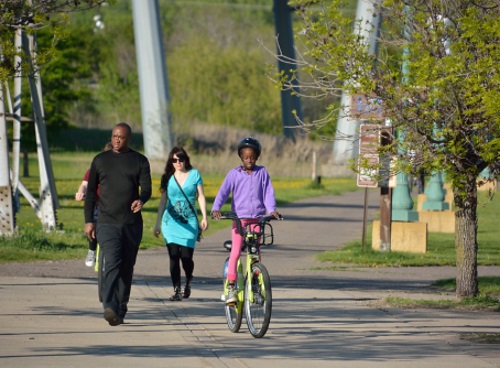The Minnesota Department of Transportation released its first Statewide Pedestrian System Plan on May 26 – a plan that provides policy and investment guidance to improve places where people walk across and along Minnesota highways.
[Photo by Minnesota DOT]
The plan identifies current priority areas for investments while laying out specific strategies to improve walking availability and accessibility statewide for the next 20 years.
“This plan provides an important framework and will help ensure we are meeting the needs and interests of people, today and into the future,” explained Minnesota DOT Commissioner Margaret Anderson Kelliher, who serves as chairperson of the AASHTO Committee on the Environment, in a statement.
“Creating safe places for people to walk is essential to improving equity and mobility, addressing climate change, and ultimately providing a better quality of life for everyone,” she said.
Kelliher added that the agency’s Statewide Pedestrian System Plan offers policy direction, identifies investment need, and provides technical guidance to improve the state transportation system for people who walk. It also sets performance measures to track progress towards creating a better pedestrian system and identifies strategies to protect people walking from the effects of climate change.
The Minnesota DOT noted that work on its pedestrian plan begin in February 2019 and included two public engagement efforts that reached 2,700 people statewide. The agency also installed seven pedestrian safety demonstrations projects across Minnesota to highlight certain safety measures in action to the public.
“This plan helps [us] identify opportunities and implement the right strategies on projects to make walking safer and more convenient for all Minnesotans,” noted Tori Nill, director of Office of Transit and Active Transportation within the Minnesota DOT. “While the plan doesn’t tell us exactly what to do in every situation, it does provide the tools we need to make those decisions and make sure pedestrian safety is included on every highway project,” Nill said.

